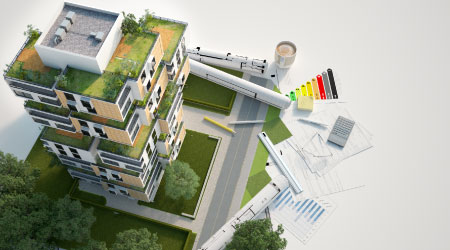The constant depleting air quality and rising air pollution across cities and worldwide have been gaining attention as it is a matter of great concern. According to the World Air Quality Report, 35 Indian cities are in the top 50 of the world’s most polluted list. The report also revealed a fact that all countries failed to maintain the World Health Organization’s air quality standard.
While the pollution levels outside, cannot be curbed individually. It is also important to focus on the air present indoors in urban as well as rural terrains. Air pollution is the root cause of multiple respiratory disorders, impacting mental and physical wellbeing, hampering the growth and development of infants and toddlers, short- and long-term health issues. It is vital to monitor the air present indoors as it is equally or more hazardous than the air outside.
Here are the top two reasons that make indoor air harmful:
Higher concentration: With activities such as cooking, cleaning, lighting of incense sticks, candles/diyas, spraying room fresheners, smoking adds more chemicals and carbon pollutants. While most people mistake that using fresheners, fragrant candles will help thinking that it is a change in the air, but it adds to the already polluted air.
Maximum exposure to toxic air: People spend most of their time indoors, therefore they are exposed to a concentrated volume of toxic air for a considerable amount of time. In fact, at night people shut their windows and doors for safety and to avoid insects and micro-organisms from entering homes, this leads to a lack of ventilation and emission of carbon dioxide which can result in a lack of fresh air leading to suffocation, restlessness and chronic health issues in the long run.
In the wake of deteriorating air quality, air purifiers are increasingly becoming popular because of their ability to remove pollutants like pollen, viruses, bacteria, odors, and dust in the air. This is done using a five-stage purification process.
The first stage of the air purification process is the pre-filter stage, which uses a large-particle air filter that eliminates dust, grime, and hair. Pre-filters are the initial step in an air purifier’s filtration process and prevent material from clogging the main air filters, allowing them to catch other microscopic contaminants like viruses and mold. These pre-filters are like strainers that take a big chunk of dirt like hair and dust out of the air, completing the initial cleaning.
In the second stage, the HEPA 14 grade filters, are used which remove more than 99.99% of the particles from the air stream that passes through them. Allergens, viruses, germs, chemical compounds, dust, and a variety of other particles which can be found in indoor air are removed during this stage. HEPA 14 is similar to the pre-filter; however, it is made out of thinner fiberglass. It is a fact that viruses cannot survive in a dry atmosphere.
This is beneficial for persons who have asthma, allergies, or other respiratory issues. During the pandemic, these types of filters have become increasingly popular since they work to keep the virus from spreading indoors.
In the third stage, activated carbon filters are an excellent medium for removing all forms of volatile organic compounds (VOCs). VOCs are compounds that can irritate your eyes or throat. The activated carbon filter helps in removing odors, fumes, and gaseous contaminants. The process of activating carbon particles is important and increases the surface area, which increases the likelihood of gases attaching to their surface and removing them from the air.
UV air filters which are included in the fourth stage, are designed to inactivate these airborne diseases and microorganisms such as mold, bacteria, and viruses, using short-wave ultraviolet radiation (UV-C light). One of the greatest risks in homes is the threat of microbes lurking in the air we breathe. These are the very sources of diseases and can cause illness & nausea, allowing the bacteria to spread from person to person during illness.
Finally, the most important and last step is the Ionizer. It emits anions in the air to neutralize positively charged allergens, pollen, mold, bacteria & viruses. An ion is a negatively or positively charged particle and the air ionizers create negative ions using electricity and then discharge them into the indoor air. These negative ions attach to positively charged particles in the room, such as dust, bacteria, pollen, smoke, and other allergens, thus neutralizing them. The positively charged particles and negative ions bond together to create dense dirt particles that cannot float in the air and falls to the ground and are swept away.
We are facing a time where air quality is decreasing as weeks progress, air purifiers are no longer a luxury but rather a necessity. Their potential is limitless and air purifiers prove to be crucial during viral seasons and to some extent, a pandemic. Indoor air purifiers utilize modern technology to their best and promise to deliver healthier and more breathable clean air. The debate is no longer about the price of the air purifier, but the price of living a healthier life. The importance of these purifiers becomes even more heightened if you’re living with a patient with lung disease or asthma because breathing polluted air can worsen their conditions and cause irreparable damage to their organs and mental health. While we are so mindful in all our day-to-day activities, and lifestyle choices it is important to not neglect the most vital part of our lives, the air we are breathing!
Facebook
Twitter
Linkedin
Email
Disclaimer
Views expressed above are the author’s own.
END OF ARTICLE
[ad_2]
Originally Appeared Here

